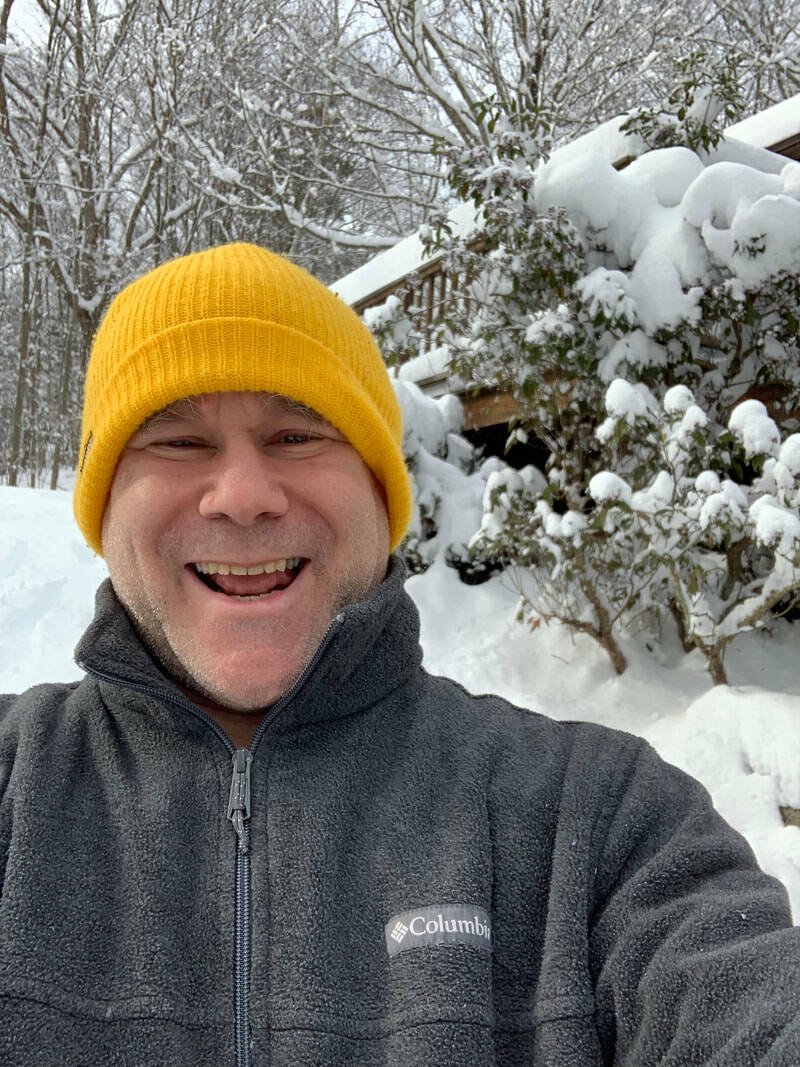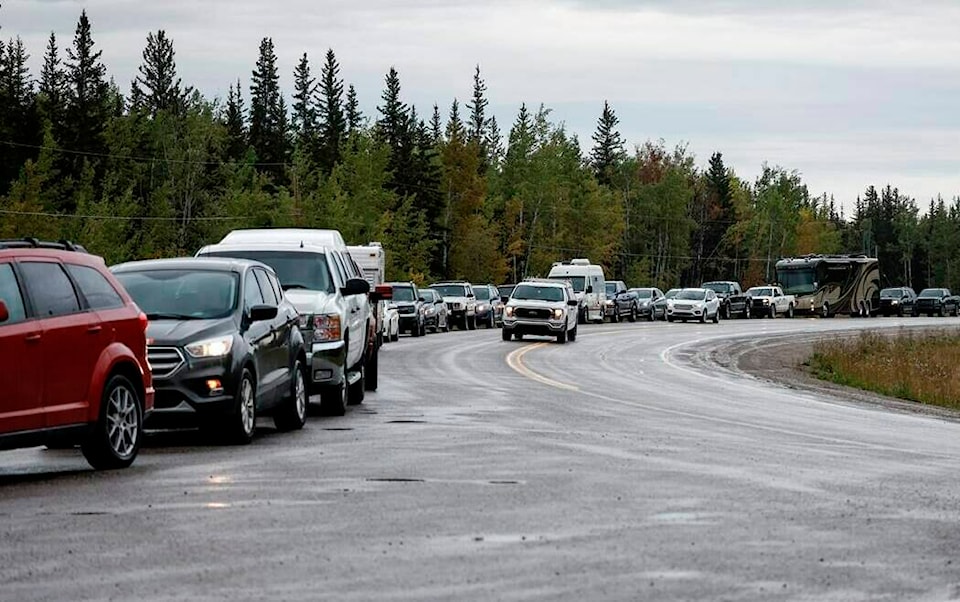Editor’s note: This is the second part of a three-part series from former Yellowknife resident Barry Zellen and his interviews with author Ed Struzik and former NNSL Media editor James Hrynyshyn about the forest fire season.
Former Inuvik Drum and News/North editor James Hrynyshyn, who resided in Yellowknife in the 1990s and who later published the Class-M blog on climate and environment, reflected on what had happened:
“Like most former Yellowknifers, I was surprised by the need for an evacuation. We’ve all been through aggressive fire seasons — I was raised in Dryden, Ont., which suffered through a forest fire season in 1974 that was so bad it was featured in the world’s first IMAX movie (North of Superior) — and I remember camping one summer in the NWT when the smoke was sufficient to keep the mosquitos at bay enough to allow sleeping outside without a tent. But evacuating the whole city was certainly not expected by anyone, and even among those who study wildfires from a climatologist’s point of view, I doubt such an eventuality was on their radar.”
While off many of our collective radars, Hrynyshyn presciently anticipated many of the dramatic consequences of a warming Arctic in the early 1990s, and recalls that wildfire risk has long been predicted by climate change scientists and policy experts.
“The increasing risk of wildfires has been incorporated into future climate change scenarios for decades now. When I started doing Al Gore’s climate change PowerPoints in 2007, several slides were devoted to fire threats; Australia, for example, has been plagued by some pretty disastrous wildfires in recent years. And even here in Western North Carolina, the city of Asheville (where Hrynyshyn now resides) saw smoky conditions a couple of years back due to unusual fire activity” (and which he wrote about for NOAA).
Fortunately, as Hrynyshyn observed, the “destructive potential” of this year’s fire threatening Yellowknife “was mitigated by the extraordinary suppression efforts that involved three 10-km-long fire breaks that were bulldozed through the forests around the city. If those hadn’t held, it is likely the destruction would have been enormous. In a way, I think that the success of those efforts is quite reassuring: if we can save a city as remote as Yellowknife, maybe we can save other communities, too.”

An end to an urban Arctic?
On the other hand, Hrynyshyn reflects, “If the fires had breached the firebreaks around Yellowknife and the city had burned to the ground, I can’t see an economic case to rebuild. Sorry, but there isn’t a good argument to made for having 20,000 people living there. Not with the diamond mines winding down. And do the other 20,000 residents of the NWT really need a big(ish) city to administer their federal subsidies and health care? Doubt it.
“I don’t think people understand how close Yellowknife came to being permanently abandoned. So, while the pressure to maintain a presence in Las Vegas will be strong (if ultimately futile), I doubt we can make the same case for urban life in the Arctic. I hate to think of the politics involved in depopulating the entire territory — and the Indigenous people who rely on some urban presence pose a very real political problem, but just how much can we afford to pay for the privilege?”
Hrynyshyn notes that it’s always been energetically expensive to live in the NWT, but it’s going to increase even more.
Indeed, Hrynyshyn adds: “The truth is, settlements in the North haven’t grown considerably over the past century, at least not relative to the rest of the continent. Canada’s population has doubled in the past 50 years to almost 40 million people. The NWT, however, has only grown at half that rate, and today is still only in the 40,000 range, and almost all of the increase has come in one city.”
That’s why, he adds, ”I don’t think encroachment is nearly as important a factor as it is further south, and certainly not as important a factor as the changes in climate parameters.” Moreover, increasing wildfires are “only one manifestation of anthropogenic climate change that is being felt in the Arctic. For example: what are chum salmon doing off the northern coast of Alaska?”
Hrynyshyn recalls that when he started paying close attention as a journalist to climate change in the early 1990s, most predictions called for the Arctic to warm at twice the rate of the global average. “
That turned out to be an underestimate by a factor of at least two,” he recalls.
Nature Strikes Back
I asked both Hrynyshyn and author Ed Struzik if humanity is at war with nature, and if nature is now fighting back.
Struzik observed that “the force and advantage is with nature. You can’t heat up the pot, as we are doing in the south, and not expect things to boil over.”
Hrynyshyn commented, “I don’t like to think of nature as ‘fighting back’ as that implies intent. But nature does seek an equilibrium. If we push too hard on some settings, it will try to adapt by fiddling with the settings in other elements of the global ecosystem. And some of those new settings will be hostile to civilization. For places like the Arctic, as well as many low-lying coastal regions like the U.S. east coast, and water-scarce deserts like Arizona and Nevada, that means it will become increasingly expensive to live.
“In Arizona and Nevada, I expect Scottsdale and Las Vegas to be untenable within 20 years. It will be just too expensive to haul water to the cities (if there is any water available, that is). In Florida, it will be too expensive to build sea walls against rising sea levels. And in the Arctic, it will be too expensive to rebuild after the inevitable fires that burn down more communities like Enterprise. The difference between Miami and Yellowknife, however, is that there are lot more people in the former.”
